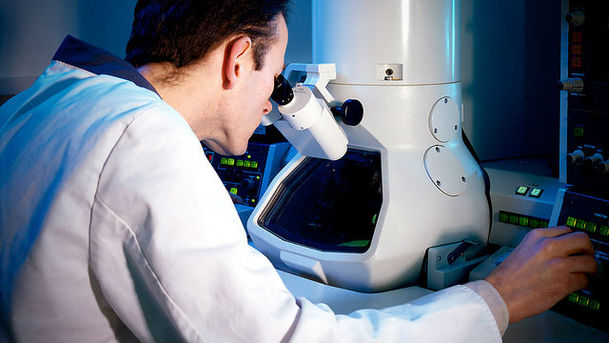Frontiers - Nanoparticles

Nanoparticles are all around us. Some are man-made, others occur naturally. Because they're so tiny - one nanometre is one billionth of a metre - nanoparticles can only be seen through an electron microscope. Richard hears more about their characteristics and potential from Richard Moore at the Institute of Nanotechnology in Stirling. Nanoparticles have unique physical properties, and scientists are looking for ways to exploit these characteristics. Nanoparticles are currently used in medicine, in food, in clothes and cosmetics. In the future, nanoparticles could also be used to help improve energy generation and storage. They might also help us remove contaminants from polluted water. In this edition of Frontiers, Richard Hollingham investigates how a better understanding of the properties of nanoparticles is helping researchers develop novel medical treatments. He talks to Dr Simon Holland and Wendy Knight at GlaxoSmithKline about research into using nanoparticles to deliver therapeutic agents to precise locations in the body. Richard also visits MagForce, a German research company, that's developing a novel therapy using heated nanoparticles of iron oxide to destroy brain cancers. These are beneficial developments, but as scientists find more and more uses for nanoparticles, concern's growing about the possible cumulative impact of so many microscopic particles in our environment. Ian Colbeck, professor of environment science at Essex University says that because they are so small, nanoparticles can be absorbed through our skin or when we breathe. The behaviour and characteristics of nanoparticles change according to their size and density, so it's very hard to predict what longer-term effects they might be having. Producer: John Watkins.